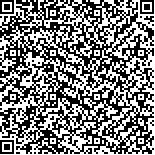本文已被:浏览 1179次 下载 686次
Received:September 08, 2017 Published Online:March 20, 2018
Received:September 08, 2017 Published Online:March 20, 2018
中文摘要: 目的 探讨孕期大鼠尼古丁暴露所致宫内发育迟缓(IUGR)子代胎鼠肝脏和骨骼肌中胰岛素受体底物(IRS)-1和IRS-2的表达变化及其相关机制。方法 将24只Wistar受孕大鼠自妊娠12 d起,随机分成4组,实验组分别皮下注射小剂量(0.5 mg/kg)、中剂量(1.0 mg/kg)和大剂量(2.0 mg/kg)尼古丁,对照组给予等体积、不含尼古丁的生理盐水。所有孕鼠每次给药体积均为2 ml/kg,每天注射两次,直到孕鼠妊娠20 d后停止。待孕鼠妊娠20 d时,采用异氟醚将其麻醉,剖腹取出胎鼠。称重,统计每组中IUGR胎鼠的数量,并计算IUGR胎鼠的发生率。收集胎鼠的血浆,采用酶联免疫吸附实验(ELISA)检测胎鼠的脂联素、皮质酮水平;分离胎鼠肝脏和骨骼肌,采用半定量聚合酶链式反应(RT-PCR)和实时定量PCR(qRT-PCR)检测胎鼠肝脏和骨骼肌IRS-1、IRS-2的mRNA表达水平,采用蛋白质印迹(Western blot)技术检测胎鼠肝脏和骨骼肌中IRS-1、IRS-2的蛋白表达水平。结果 随尼古丁剂量的增加(0→0.5→1.0→2.0 mg/kg),胎鼠的体重递降[(3.85±0.14)g→(3.61±0.19)g→(3.48±0.16)g→(3.15±0.21)g,P<0.05],IUGR发生率递升(0→14.24%→26.35%→75.93%,P<0.05),呈剂量依赖性。不同剂量尼古丁处理后脂联素水平较对照组均显著降低(P<0.05),中、高剂量组皮质酮水平较对照组显著升高(P<0.05)。2.0 mg/kg尼古丁处理后胎鼠肝脏中IRS-2 mRNA、蛋白表达水平和骨骼肌中IRS-1 mRNA、蛋白表达水平均显著低于对照组(P<0.05)。结论 孕期大鼠尼古丁暴露可引起子代胎鼠肝脏中IRS-2 mRNA、蛋白和骨骼肌中IRS-1 mRNA、蛋白表达水平下降,进而使胎鼠糖脂代谢通路发生改变,直接影响胎鼠的生长发育,这可能是造成IUGR的产生与胎儿出生后胰岛素抵抗发生的原因之一。
Abstract:Objective To analyze the intrauterine growth retardation (IUGR) and the changes of expressions of insulin receptor substrate-1 (IRS-1) and insulin receptor substrate-2 (IRS-2), the proteins of insulin signaling pathway, in liver and skeletal muscle of offspring fetal rats because of exposure to nicotine of pregnant rats and explore the related mechanism.? Methods Twenty-four Wistar rats 12 days after pregnancy were randomly divided into experiment group (hypodermic injection of nicotine of different doses, till 20 days after pregnancy) including small dose subgroup (0. 5 mg/kg, 2 ml, bid), mediumdose subgroup(1. 0 mg/kg, 2 ml, bid) and largedose subgroup (2. 0 mg/kg, 2 ml, bid) and control group (hypodermic injection of nicotine free normal saline of same volume, bid, till 20 days after pregnancy). At 20-day after rat pregnancy, fetal rats were taken out from mother′s body by caesarean after isoflurane anaesthesia to weigh and count the number and incidence of IUGR fetal rats in each group. Collecting the plasma of fetal rats in each group, adiponectin and corticosterone levels were detected by enzyme linked immunosorbent assay (ELISA) method. Isolating liver and skeletal muscle of fetal rats, the levels of IRS-1 mRNA and IRS-2 mRNA expressions were detected by semi-quantitative reverse transcription polymerase chain reaction (RT-PCR) and real-time quantitative polymerase chain reaction (qRT-PCR), and the levels of IRS-1 protein and IRS-2 protein expressions were detected by Western blot method.? Results The weight of fetal rats after exposure to nicotine of different doses significantly decreased compared with control group (all P<0.05). The incidence of IUGR fetal rats for small, medium and large doses of nicotine were 14. 24%, 26. 35% and 75. 93%, respectively, and there was significant difference for comparison among groups (P<0.05). With the increase of nicotine concentration, weight of fetal rats decreased, and incidence of IUGR fetal rats increased in obvious dose-dependent manner. After exposure to nicotine of different doses, the concentration of plasma adiponectin of fetal rats decreased compared with control group (all P<0.05) , and the concentration of plasma corticosterone of fetal rats after exposure to nicotine of medium and large dosesincreased compared with control group in dose-dependent manner (all P<0.05). After exposure to nicotine of large doses, the expression levels of IRS-2 mRNA and IRS-2 protein in liver of fetal rats decreased compared with control group (all P<0.05) , and expression levels of IRS-1 mRNA and IRS-1 protein in skeletal muscle of fetal rats decreased compared with control group (all P<0.05). Conclusion Nicotine exposure in pregnant rats could lead to the decrease of expression of IRS-2 mRNA and IRS-2 protein in liver and the decrease of expression levels of IRS-1 mRNA and IRS-1 protein in skeletal muscle of fetal rats and the changes of the glycolipid metabolic pathway of fetal rats further which will make a direct impact on the growth and development of fetal rats, and this may be one of the reasons of IUGR occurrence and insulin resistance occurrence after birth of fetal rats.
keywords: Nicotine Intrauterine growth retardation Insulin receptor substrate-1 Insulin receptor substrate-2
文章编号: 中图分类号:R-33,R 714.5 文献标志码:A
基金项目:国家自然科学基金青年科学基金项目(81502817)
| Author Name | Affiliation |
| JIANG Hua*, DENG Yu | *Department of Orthopedics, Chengdu Second People′s Hospital, Chengdu, Sichuan 610000, China |
| 邓宇2 | 2.武汉大学中南医院骨科,湖北 武汉 430071 |
| Author Name | Affiliation |
| JIANG Hua*, DENG Yu | *Department of Orthopedics, Chengdu Second People′s Hospital, Chengdu, Sichuan 610000, China |
| 邓宇2 | 2.武汉大学中南医院骨科,湖北 武汉 430071 |
引用文本:
